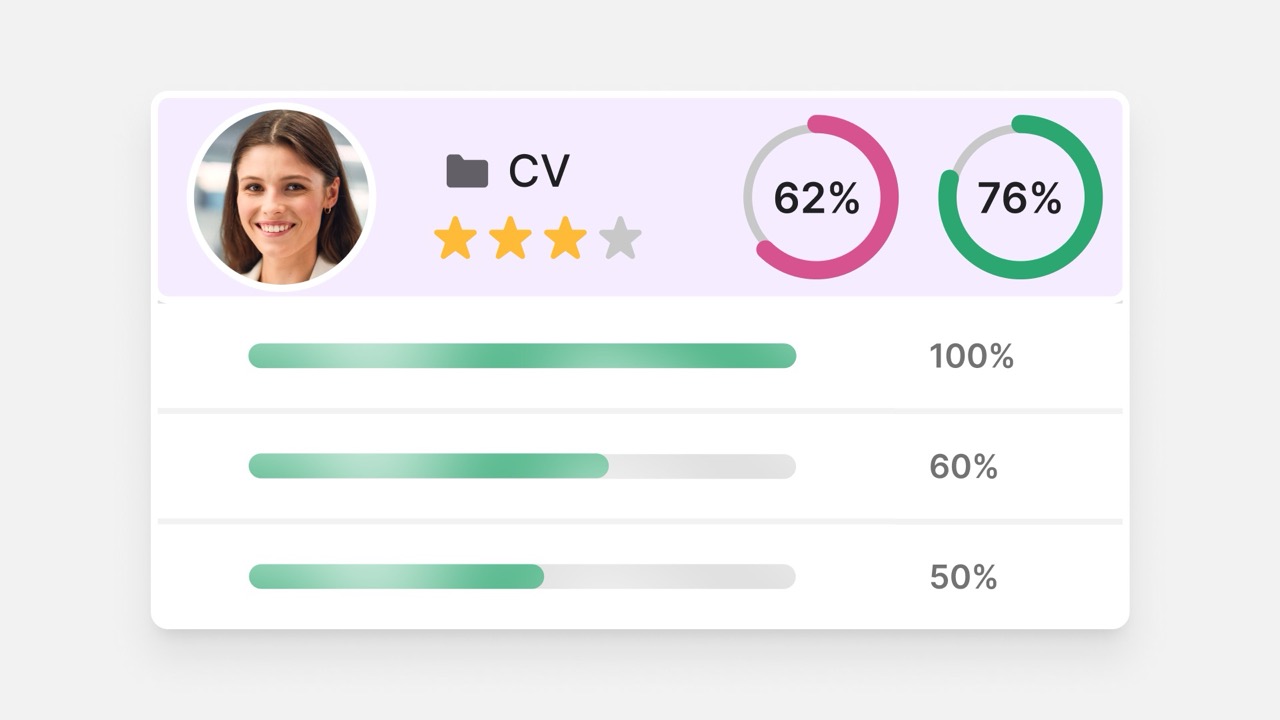Feeling overwhelmed by HR paperwork and endless emails? Could you access your work information and manage tasks on your own time? If so, you’re not alone. Fortunately, many companies are adopting Employee Self-Service (ESS) portals, empowering employees to take charge of their HR experience. But what exactly can you do with an ESS portal?
Imagine a secure online hub where you can access a wide range of HR functions directly. No more waiting in line or filling out tedious forms. With an ESS portal, you can manage your personal information, track your time and leave, review your pay and benefits, and much more, all at your fingertips.
Ready to unlock the power of self-service? Let’s delve into the key activities you can complete using your ESS portal:
Employee Self-Service (ESS): What Is It?
Employee Self-Service (ESS) refers to digital systems that empower employees to manage their own HR information and perform various HR-related tasks independently. This essentially means they can access and update their personal data, submit requests, and access essential information without needing direct involvement from the HR department for every minor task.
Examples of Activities in a UAE-focused ESS Portal:
-
Leave Management
Apply for various leave types (annual, sick, personal), track balances, and receive approval notifications electronically. Bayzat reports that many UAE employees prefer to manage their leave electronically. Additionally, employees can easily check their leave history and plan future absences through the portal.
-
Payroll Management
View payslips, salary breakdown, and tax information securely. Update bank details and request salary advances if applicable. Furthermore, employees can access historical payroll data and generate custom reports for budgeting purposes.
-
Attendance Management
Clock in/out electronically, access time sheets, and view overtime calculations. Moreover, managers can monitor attendance trends, identify patterns, and make data-driven decisions to optimize workforce scheduling.
-
Benefits Enrollment
Choose and manage health insurance, pension plans, and other benefits electronically. Additionally, employees can compare different benefit options, access educational resources, and receive personalized recommendations based on their needs.
-
Performance Management
View performance goals and feedback, request training opportunities, and track career development progress. Furthermore, the portal facilitates ongoing performance discussions, 360-degree feedback, and goal alignment across teams.
-
Document Management
Access company policies, employee handbooks, and other important documents on-demand. Moreover, employees can electronically sign documents, track version history, and collaborate on projects in real time.
-
Request Management
Submit requests for certificates, NOCs, and other HR-related documents with automated tracking and approvals. Additionally, employees can receive status updates on their requests, escalate issues if needed, and provide feedback for process improvement.
To maximize the potential of an ESS portal, consider integrating it with a comprehensive HRIS platform like Bayzat. This creates a powerful ecosystem that streamlines HR processes, leverages data analytics and empowers employees. Bayzat’s ESS solution offers additional features like employee engagement surveys, goal setting tools, and feedback channels, fostering a more connected and engaged workplace.
How Does Employee Self-Service (ESS) Work?
Employee Self-Service (ESS) works through a digital platform accessed by employees through a company’s intranet, HR portal, or dedicated mobile app. This platform acts as a centralized hub for various HR-related tasks and information, offering a user-friendly experience for employees. Here’s a breakdown of its core functionalities:
1- Accessing Information:
- Personal Details Management: In addition to basic contact information, employees can update personal details such as marital status, address changes, and banking information securely through the ESS platform.
- Tax Management: Beyond accessing pay stubs and tax documents, employees can adjust tax withholding allowances, update direct deposit information, and download previous tax filings for reference or submission.
- Benefit Enrollment and Management: The ESS platform provides detailed information about available benefits packages, allowing employees to compare plans, make selections, and manage coverage for themselves and their dependents. Additionally, employees can modify benefit elections as needed during open enrollment periods.
- Time and Attendance Tracking: Apart from logging work hours and requesting time off, employees can view historical attendance records, monitor accrued leave balances, and access detailed pay statements, which may include overtime and other earnings.
- Performance Feedback and Reviews: In addition to viewing past performance evaluations, employees may have access to ongoing feedback, goal setting tools, and development plans, fostering continuous improvement and career growth.
- Policy and Handbook Access: Employees can easily reference company policies, procedures, and employee handbooks to stay informed about workplace guidelines, compliance requirements, and expectations.
2- Moving on to Performing Tasks within the ESS:
- Request Submission: In addition to requesting time off or sick leave, employees can initiate various other requests, such as equipment requisitions, training registrations, scheduling adjustments, and streamlining administrative processes.
- Preferences Customization: The platform allows employees to tailor their user experience by setting communication preferences, opting in or out of certain notifications, and managing subscriptions to newsletters or updates.
- Learning and Development Opportunities: Employees can access a library of training materials, courses, and educational resources to enhance their skills, acquire new knowledge, and progress in their careers.
- Collaboration Features: Some ESS systems include social collaboration tools or discussion forums where employees can share insights, seek advice, and collaborate on projects, fostering a sense of community and teamwork.
3- Regarding Security and Access Control:
- Role-Based Access Control: Access to sensitive data and functionalities within the ESS platform is governed by predefined roles and permissions, ensuring that employees only have access to information relevant to their job responsibilities.
- Authentication Measures: Robust security protocols, including secure login credentials and multi-factor authentication, safeguard against unauthorized access and protect employee data from breaches or cyber threats.
- Audit Trails and Compliance: The system generates audit trails that record user activities and changes made within the platform, enabling administrators to monitor usage, track compliance, and investigate any discrepancies or security incidents.
4- Implementation Process
Implementing an ESS system involves a thorough evaluation of available platforms, customization to align with organizational needs, seamless integration with existing HR systems, and comprehensive training programs to ensure successful adoption and utilization by employees.
Potential Challenges and Concerns of Employee Self-Service (ESS):
Addressing potential challenges or concerns related to an Employee Self-Service (ESS) system is crucial for successful implementation and ongoing usage. Here are some common issues and strategies to mitigate them:
-
User Adoption and Training
One challenge is ensuring that employees embrace the new system and feel comfortable using it. To address this, provide comprehensive training sessions and support materials. Offer ongoing support through help desks, FAQs, and user guides. Encourage feedback and address any usability issues promptly.
-
Data Security and Privacy
Employees may be concerned about the security of their personal information stored within the ESS platform. Ensure robust data encryption, secure authentication methods, and compliance with data protection regulations such as GDPR or CCPA. Communicate transparently about security measures and privacy policies to build trust.
-
Technical Issues and System Downtime
Technical glitches or system downtime can disrupt workflow and frustrate employees. Implement robust IT infrastructure, including backup systems and redundancy measures, to minimize downtime. Provide timely updates on system maintenance schedules and resolution progress during outages.
-
Accessibility and Usability
Ensure that the ESS platform is accessible to all employees, including those with disabilities or limited technological proficiency. Design the interface with user-friendly navigation, clear instructions, and responsive layouts. Conduct accessibility audits and usability testing to identify and address any barriers to usage.
-
Integration Challenges
Integrating the ESS system with existing HRIS or payroll systems can pose compatibility issues and data synchronization challenges. Work closely with IT and HR teams to ensure seamless integration, perform thorough testing, and troubleshoot any integration errors promptly.
-
Change Management and Resistance
Resistance to change from employees accustomed to traditional paper-based processes or manual workflows can hinder adoption. Implement change management strategies, such as stakeholder engagement, communication plans, and incentivizing early adopters. Highlight the benefits of the ESS system in terms of efficiency, convenience, and empowerment.
-
Data Accuracy and Integrity
Incorrect or outdated information within the ESS platform can lead to errors in payroll, benefits administration, or compliance reporting. Implement data validation checks, automated data syncing with authoritative sources, and regular data audits to maintain accuracy and integrity. Encourage employees to review and verify their personal information periodically.
-
Cultural or Organizational Resistance
In some cases, organizational culture or management resistance may impede the adoption of ESS systems. Foster a culture of transparency, open communication, and collaboration to overcome resistance. Align the implementation with strategic business goals and demonstrate leadership support for the initiative.
Benefits for Employees
- 24/7 Access: View payslips, leave balances, and personal information anytime, anywhere. Submit requests and update details at their convenience, fostering a sense of autonomy and control.
- Simplified Processes: Apply for leave, submit timesheets, track overtime, and update personal information effortlessly, eliminating repetitive tasks and paperwork.
- Transparency and Visibility: Get real-time insights into salary details, benefits enrollment, and performance feedback, promoting informed decision-making and career development.
- Reduced Waiting Times: Eliminate time spent waiting for HR assistance with routine tasks, leading to increased productivity and improved job satisfaction.
- Improved Communication: Stay informed with company announcements, policy updates, and personalized notifications, ensuring everyone is on the same page.
- Increased Access to Resources: Gain access to a comprehensive knowledge base, FAQs, and training materials directly through the portal, empowering employees to find information and support independently.
- Streamlined Feedback Mechanisms: Provide feedback on company policies, processes, and workplace experiences through interactive surveys and suggestion forms within the portal, promoting continuous improvement and engagement.
Benefits for Employers
-
Increased Efficiency and Reduced Costs
HR teams can focus on strategic initiatives and employee engagement by automating tasks and minimizing administrative burdens. Bayzat’s data reveals that companies using ESS portals experience a 20% reduction in HR administrative tasks, freeing up valuable resources.
-
Improved Accuracy and Compliance
Automated workflows and data validation features minimize errors in timekeeping, leave management, and payroll processing, ensuring adherence to UAE labor laws and regulations.
-
Enhanced Data-Driven Decision Making
Bayzat’s unique value lies in its powerful data analytics. By integrating ESS data with HRIS platforms, organizations gain valuable insights into employee behavior, trends, and preferences, enabling data-driven decisions for improved HR policies, benefits optimization, and workforce management.
-
Empowered and Engaged Workforce
Fostering a culture of self-sufficiency and accountability leads to improved employee morale, commitment, and ultimately, higher retention rates.
-
Streamlined Performance Reviews
Conduct performance evaluations efficiently through automated reminders, structured templates, and data-driven insights, facilitating fair and constructive feedback exchanges between managers and employees.
-
Tailored Learning and Development
Recommend personalized training resources and career development opportunities based on individual performance data and goals captured within the ESS portal, fostering continuous growth and skill enhancement.
Navigating the Future of HR with ESS Solutions In UAE
Implementing employee Self-Service (ESS) requires thoughtful planning and proactive measures to address potential challenges and concerns. By prioritizing employee comfort, data security, and user-friendliness, organizations can navigate these hurdles and unlock the full potential of ESS.
As the UAE embraces digital transformation, ESS portals are poised to become the norm. These platforms empower employees, enhance HR efficiency, and lay the foundation for a more agile and productive workforce. By investing in user-friendly and secure ESS solutions, organizations can unlock a future of empowered employees, streamlined processes, and enhanced business performance.
The benefits of a well-implemented ESS system go far beyond mere cost savings. Imagine empowered employees taking control of their HR tasks, HR teams freed from mundane paperwork, and a seamless flow of information across the organization. This translates to increased employee satisfaction, productivity, and ultimately, a more engaged and thriving workforce.
Are you ready to embark on the journey of transforming your HR processes with ESS? Take the first step by conducting a thorough needs assessment, exploring different platform options such as Bayzat, and involving your employees throughout the process. Remember, successful implementation hinges on transparency, communication, and a commitment to ongoing support.
Embrace the future of HR with ESS
Unlock a world of possibilities for your organization and your people. Hurry up! Schedule a consultation with Bayzat’s team of experts to discuss your specific needs and find the perfect ESS solution for your organization.
Schedule Now







Get Social